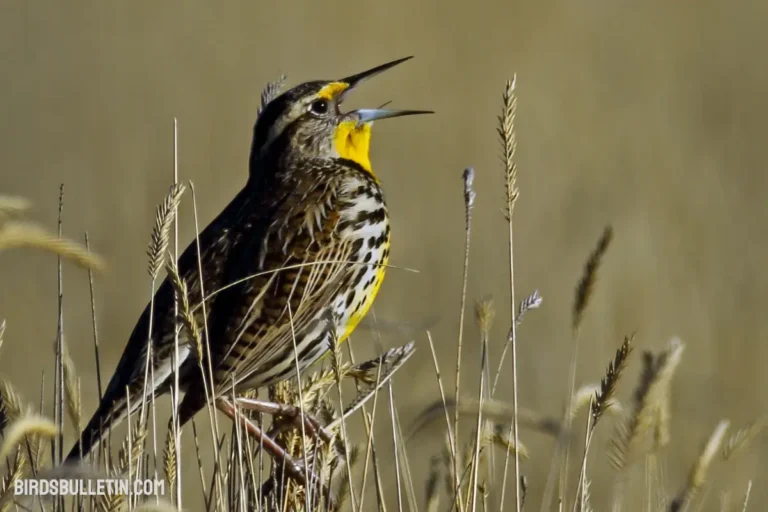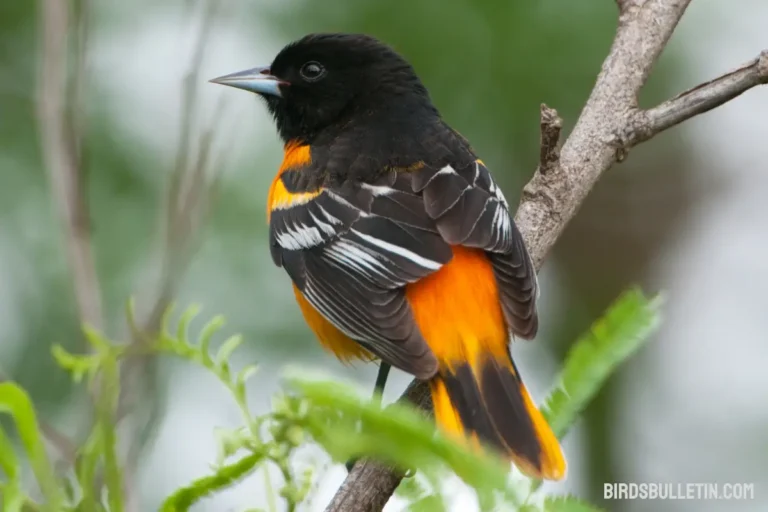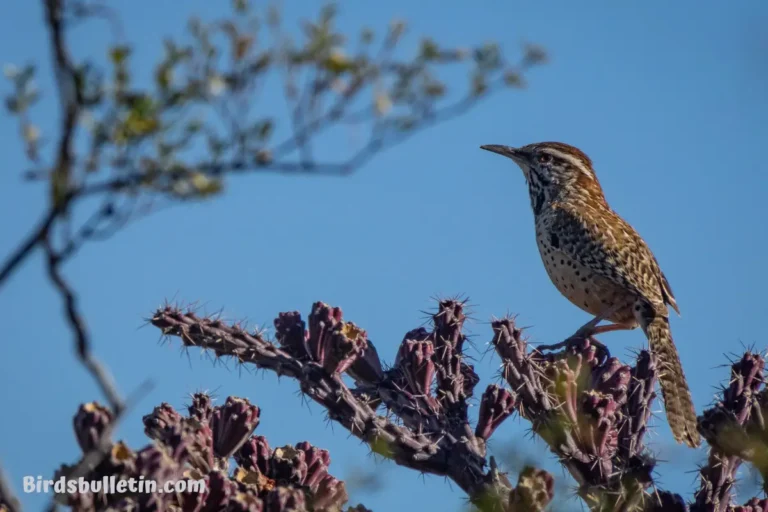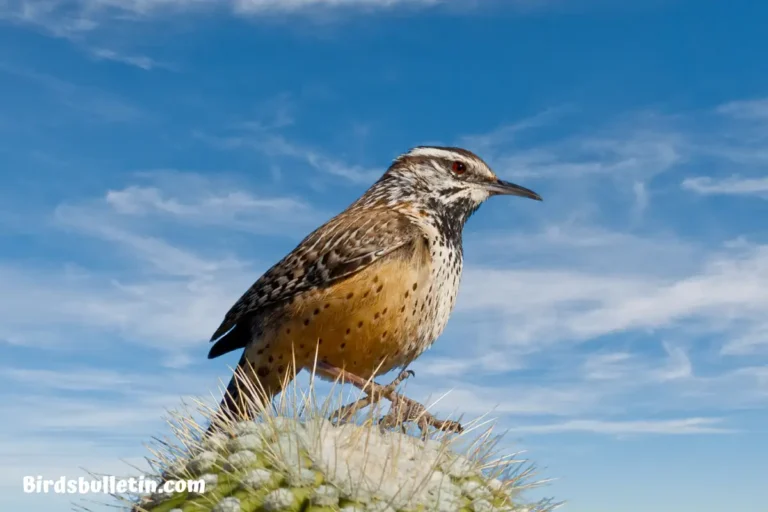American Robin Overview (Subspecies)
The American robin (Turdus migratorius) is a familiar migratory songbird found throughout North America. With its distinctive reddish-orange breast and cheery song, the robin is one of the most recognized birds in North America.
How can you identify the American robin? Robins have a grayish-brown back and a reddish-orange breast. Their belly and throat are white. They have a black head and tail, with white patches around their eyes. Robins have long legs and short tails.
Males and females have similar plumage, but females may be slightly duller in color. Juvenile birds have spotted breasts until their first molt. Robins flap their wings quickly and fly at about 20-40 mph. In flight, you’ll see their pale underwings contrasted against their dark back.
Interested in similar topics on birds overview:
American Robin Profile:
Here is a table with information about the American robin:
| Information | Details |
|---|---|
| Scientific Name: | Turdus migratorius |
| Alternative Names: | Red-breasted robin, Northern robin |
| Color: | Grayish-brown back, reddish-orange breast, white belly |
| Lifespan: | 2 years in the wild |
| Wingspan: | 31-41 cm (12-16 inches) |
| Weight: | 77-100 g (2.7-3.5 oz) |
| Size: | 20-28 cm (7.9-11 inches) long |
| Diet: | Worms, insects, berries, fruits |
| Breeding Season: | Spring, with eggs laid from April to July |
| Locations: | Found across North America |
| Threats: | Car strikes, predators, outdoor cats, communications towers |
Subspecies
The American Robin has seven recognized subspecies that intergrade and blend into each other across their ranges.
01. The eastern robin (T. m. migratorius) is the nominate subspecies, breeding across most of Canada and the U.S. except the West Coast. It winters throughout much of the lower 48 states and south to Mexico.
02. The Newfoundland robin (T. m. nigrideus) breeds in eastern Canada and winters in the eastern U.S. It is uniformly darker on the head and back with a redder breast.
03. The southern robin (T. m. achrusterus) breeds in the central U.S. south to Florida and the Gulf. It is smaller with paler underparts than the eastern subspecies.
04. The northwestern robin (T. m. caurinus) inhabits the Pacific Northwest. It is dark-headed with restricted white tail markings.
05. The western robin (T. m. propinquus) ranges down the West Coast and has paler, more brownish plumage than eastern birds.
06. The San Lucas robin (T. m. confinis) is a distinctive pale gray-brown subspecies in Baja California.
07. The Mexican robin (T. m. phillipsi) resides in Mexico year-round. It has a larger bill and rustier underside than eastern robins.
Population
With an estimated population of over 370 million, the American robin is one of the most abundant and widespread songbirds in North America. They thrive in human-altered habitats and have expanded their range along with agriculture and urbanization.
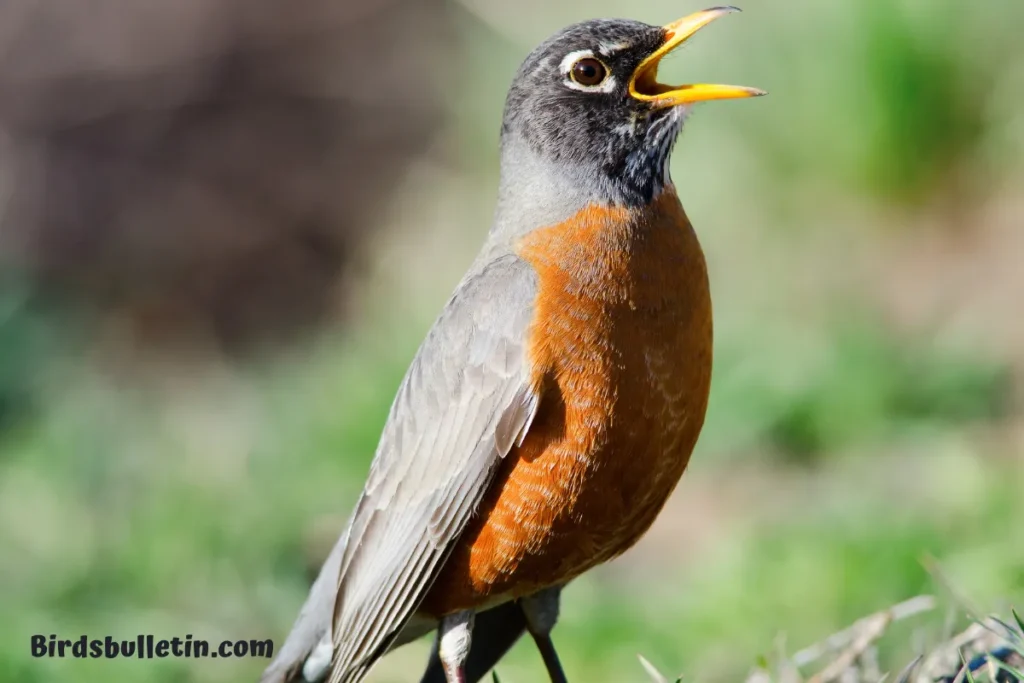
While overall populations remain steady, some local declines have occurred, particularly in areas along their southern range. Habitat loss on breeding and wintering grounds is a major threat.
Migration
Most robin populations are migratory, breeding in northern latitudes and migrating south for winter. Migration peaks in March-May and September-November, although the exact timing varies by region.
Robins migrate during the day, traveling in loose flocks. They primarily migrate during the day and stop to rest at night. Migration routes shift from year to year based on food supplies and weather conditions.
Some northern populations like those in Canada undertake long migrations down to southern U.S. states or Mexico. Other populations, particularly those along the Pacific coast, are short-distance migrants or permanent residents.
Behavior
Robins are active, ground-foraging birds. They walk or run over lawns and fields looking for earthworms and insects. They also eat fruits and berries. Robins are diurnal, most actively foraging early in the day.
Males are strongly territorial during the breeding season. They advertise their territory by singing and aggressively chasing intruders. Both sexes sing, with males doing so more frequently. Robin’s song consists of a string of clear, flute-like notes.
Robins are socially monogamous, and pairs may mate for life. Both males and females build nests of grass, twigs, and mud. Females lay 3-5 eggs of a blue-green color. Parents share the incubation and feeding of nestlings. Robins usually have 2-3 broods per season across their breeding range.
Robin – Human Connections
With their familiar presence in backyards and parks, robins have a special place in human culture. Their early spring song is considered a welcome harbinger of the warmer seasons.
Robins readily use bird feeders, platforms, and birdbaths located near human homes. However, the use of pesticides and herbicides can poison robins feeding on lawns. Prevention of natural food sources, like the removal of berries or fruit trees, may negatively impact robin survival.
Providing natural habitats, limiting pesticide use, and conscious planting of native species may help support robin populations near your home. Observing robins can connect you to nature and provide opportunities to participate in citizen science programs.
Conservation Status
With stable, widespread populations, the American robin has a conservation status of Least Concern. They are not considered threatened or endangered. However, localized declines and threats on migration routes highlight the need for continued monitoring and habitat conservation.
You can help robins by providing natural food sources in your yard, limiting pesticide use, keeping cats indoors, participating in nest monitoring programs, and supporting conservation organizations.
Maintaining habitat corridors and sustainable environmental practices are key to ensuring the American robin continues to grace our fields and neighborhoods for generations to come.
Interesting Facts about Robin
Here are some awesome facts about American robin:
- The American robin is actually a thrush, not a robin. True robins are found in Europe.
- Its beautiful song consists of complicated melodies. Robins have one of the most complex songs of all birds.
- The robin is the state bird of Connecticut, Michigan, and Wisconsin.
- Robins can have up to 3 broods per breeding season, with 3-5 eggs per clutch.
- Young robins leave the nest just 11-14 days after hatching.
- Robins migrate south for winter, but some stay as far north as Canada if berry crops are plentiful.
- They aggressively defend their territories, even against much larger birds.
- Robins can live up to 14 years, an extremely long life for a songbird.
- Their diet consists of 40% invertebrates like worms and insects and 60% fruit and berries.
- Both the male and female robin build the nest, which takes around 6 days to construct.
Frequently Asked Questions
01. When do robins migrate?
Most robins migrate north to their breeding grounds between February and May and migrate south for winter between September and November. The exact timing depends on their breeding range. Some populations are permanent residents.
02. Why do American Robins have a red breast?
The vibrant red-orange breast of the American Robin is a result of the pigments in their diet. They consume fruits rich in carotenoids, which contribute to the development of their striking red plumage.
03. How can I attract American Robins to my garden?
To attract American Robins, provide a bird-friendly environment with trees, shrubs, and open areas. Plant fruit-bearing trees and bushes like holly, dogwood, and serviceberry. Offer a clean source of water and avoid using harmful pesticides to create a welcoming habitat for these birds.
References:
- National Audubon Society. (n.d.). American Robin. Retrieved from https://www.audubon.org/field-guide/bird/american-robin
- Cornell Lab of Ornithology. (n.d.). American Robin. Retrieved from https://www.allaboutbirds.org/guide/American_Robin
- National Wildlife Federation. (n.d.). American Robin. Retrieved from https://www.nwf.org/Educational-Resources/Wildlife-Guide/Birds/American-Robin


